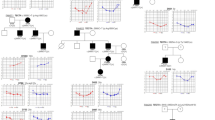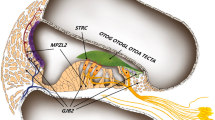Abstract
Congenital sensorineural hearing loss (CSHL) and microtia are development-related diseases, sharing some factors and affecting children’s hearing. However, genetic tests only focus on CSHL. We try to identify the common molecular mechanism of CSHL and microtia as candidates combining gene diagnosis biomarkers. Whole-exon sequencing (WES), Sanger sequencing, qPCR, and bioinformatics analyses were performed in microtia family (F1), family two, whose proband suffered from microtia and CSHL (F2), five microtia, and four CSHL individuals, respectively. We found that 40% microtia and 40% CSHL relevant genes were detected in F1 and a sharing pathway: the sensory perception of sound was identified. Moreover, the copy number variation in proband F2 was identified in one gene of the sharing pathway: EYA1. Meanwhile, two variants of BUB3 were identified in F1 data. BUB3 is related to development, dog ear type, direct and indirect interaction with microtia, and CSHL relevant genes. Notably, although the allele frequency of two variants of BUB3 showed significant differences between microtia and CSHL, the special microtia-relevant genotype also could be detected in one CSHL sample. These results suggest that the sensory perception of sound and the development of relevant pathways may be the common pathways of microtia and CSHL. Genes of these pathways can be used as candidates combining gene diagnosis biomarkers.



Similar content being viewed by others
Data availability
The authors confirm that the data supporting the findings of this study are available in GSA (https://bigd.big.ac.cn/gsa-human/), under accession number HRA000485 and HRA000486.
Code availability
Not applicable.
References
Ahmed M, Wong EY, Sun J, Xu J, Wang F, Xu PX (2012) Eya1-Six1 interaction is sufficient to induce hair cell fate in the cochlea by activating Atoh1 expression in cooperation with Sox2. Dev Cell 22:377–390
Anthwal N, Thompson H (2016) The development of the mammalian outer and middle ear. J Anat 228:217–232
Azadegan-Dehkordi F, Ahmadi R, Bahrami T, Yazdanpanahi N, Farrokhi E, Tabatabaiefar MA, Hashemzadeh-Chaleshtori M (2018) A novel variant of SLC26A4 and first report of the c.716T>A variant in Iranian pedigrees with non-syndromic sensorineural hearing loss. Am J Otolaryngol 39:719–725
Baik HW, Yu H, Kim KS, Kim GH (2008) A narrow internal auditory canal with duplication in a patient with congenital sensorineural hearing loss. Korean J Radiol 9(Suppl):S22-25
Cox TC, Camci ED, Vora S, Luquetti DV, Turner EE (2014) The genetics of auricular development and malformation: new findings in model systems driving future directions for microtia research. Eur J Med Genet 57:394–401
DePristo MA, Banks E, Poplin R, Garimella KV, Maguire JR, Hartl C, Philippakis AA, del Angel G, Rivas MA, Hanna M et al (2011) A framework for variation discovery and genotyping using next-generation DNA sequencing data. Nat Genet 43:491–498
Doll, J., Kolb, S., Schnapp, L., Rad, A., Rüschendorf, F., Khan, I., Adli, A., Hasanzadeh, A., Liedtke, D., Knaup, S., et al. (2020). Novel loss-of-function variants in CDC14A are associated with recessive sensorineural hearing loss in Iranian and Pakistani patients. Int J Mol Sci 21.
Fenwick AL, Kliszczak M, Cooper F, Murray J, Sanchez-Pulido L, Twigg SR, Goriely A, McGowan SJ, Miller KA, Taylor IB et al (2016) Mutations in CDC45, encoding an essential component of the pre-initiation complex, cause Meier-Gorlin syndrome and craniosynostosis. Am J Hum Genet 99:125–138
Hersh JH, Ganzel TM, Fellows RA (1991) Michel’s anomaly, type I microtia and microdontia. Ear Nose Throat J 70:155–157
Huang DW, Sherman BT, Lempicki RA (2009) Systematic and integrative analysis of large gene lists using DAVID bioinformatics resources. Nat Protoc 4:44–57
Kalatzis V, Sahly I, El-Amraoui A, Petit C (1998) Eya1 expression in the developing ear and kidney: towards the understanding of the pathogenesis of Branchio-Oto-Renal (BOR) syndrome. Developmental Dynamics : an Official Publication of the American Association of Anatomists 213:486–499
Kalitsis P, Earle E, Fowler KJ, Choo KH (2000) Bub3 gene disruption in mice reveals essential mitotic spindle checkpoint function during early embryogenesis. Genes Dev 14:2277–2282
Kim MA, Kim SH, Ryu N, Ma JH, Kim YR, Jung J, Hsu CJ, Choi JY, Lee KY, Wangemann P et al (2019) Gene therapy for hereditary hearing loss by SLC26A4 mutations in mice reveals distinct functional roles of pendrin in normal hearing. Theranostics 9:7184–7199
Lalani SR, Safiullah AM, Fernbach SD, Harutyunyan KG, Thaller C, Peterson LE, McPherson JD, Gibbs RA, White LD, Hefner M et al (2006) Spectrum of CHD7 mutations in 110 individuals with CHARGE syndrome and genotype-phenotype correlation. Am J Hum Genet 78:303–314
Lan, M.Y., Shiao, J.Y., Ho, C.Y., and Hung, H.C. (2009). Measurements of normal inner ear on computed tomography in children with congenital sensorineural hearing loss. European archives of oto-rhino-laryngology : official journal of the European Federation of Oto-Rhino-Laryngological Societies (EUFOS) : affiliated with the German Society for Oto-Rhino-Laryngology - Head and Neck Surgery 266 1361–1364.
Li D, Chin W, Wu J, Zhang Q, Xu F, Xu Z, Zhang R (2010) Psychosocial outcomes among microtia patients of different ages and genders before ear reconstruction. Aesthetic Plast Surg 34:570–576
Liberman MC, Kujawa SG (2017) Cochlear synaptopathy in acquired sensorineural hearing loss: manifestations and mechanisms. Hear Res 349:138–147
Lin, L., Pan, B., Jiang, H.Y., Zhuang, H.X., Zhao, Y.Y., Yang, Q.H., He, L.R., Han, J., and Wang, S.J. (2009). [Study of methylation of promoter of EYA1 gene in microtia]. Zhonghua zheng xing wai ke za zhi = Zhonghua zhengxing waike zazhi = Chinese journal of plastic surgery 25, 436–439.
Liu Q, Shen E, Min Q, Li X, Wang X, Li X, Sun ZS, Wu J (2012) Exome-assistant: a rapid and easy detection of disease-related genes and genetic variations from exome sequencing. BMC Genomics 13:692
Ma J, Lin K, Jiang HC, Yang Y, Zhang Y, Yang G, Sun H, Ming C, Bi X, Zhang T (2019) A novel mutation of the PAX3 gene in a Chinese family with Waardenburg syndrome type I. Mol Gen Genomic Med 7:e00798
Mafee MF, Selis JE, Yannias DA, Valvassori GE, Pruzansky S, Applebaum EL, Capek V (1984) Congenital sensorineural hearing loss. Radiology 150:427–434
Mallo M (2003) Formation of the outer and middle ear, molecular mechanisms. Curr Top Dev Biol 57:85–113
Matsunaga T (2014) Etiology and genes. Adv Otorhinolaryngol 75:2–8
Minoux M, Kratochwil CF, Ducret S, Amin S, Kitazawa T, Kurihara H, Bobola N, Vilain N, Rijli FM (2013) Mouse Hoxa2 mutations provide a model for microtia and auricle duplication. Development (cambridge, England) 140:4386–4397
Moser T, Starr A (2016) Auditory neuropathy–neural and synaptic mechanisms. Nat Rev Neurol 12:135–149
Ordonez, J., and Tekin, M. (1993). Congenital deafness with labyrinthine aplasia, microtia, and microdontia. In GeneReviews(®), M.P. Adam, H.H. Ardinger, R.A. Pagon, S.E. Wallace, L.J.H. Bean, K. Stephens, and A. Amemiya, eds. (Seattle WA: © 1993–2020, University of Washington, Seattle. GeneReviews is a registered trademark of the University of Washington, Seattle).
Plassais J, Kim J, Davis BW, Karyadi DM, Hogan AN, Harris AC, Decker B, Parker HG, Ostrander EA (2019) Whole genome sequencing of canids reveals genomic regions under selection and variants influencing morphology. Nat Commun 10:1489
Ryan MA, Olshan AF, Canfield MA, Hoyt AT, Scheuerle AE, Carmichael SL, Shaw GM, Werler MM, Fisher SC, Desrosiers TA et al (2019) Sociodemographic, health behavioral, and clinical risk factors for anotia/microtia in a population-based case-control study. Int J Pediatr Otorhinolaryngol 122:18–26
Sen R, Baltimore D (1986) Multiple nuclear factors interact with the immunoglobulin enhancer sequences. Cell 46:705–716
Stelzer, G., Rosen, N., Plaschkes, I., Zimmerman, S., Twik, M., Fishilevich, S., Stein, T.I., Nudel, R., Lieder, I., Mazor, Y., et al. (2016). The GeneCards suite: from gene data mining to disease genome sequence analyses. Curr Protoc Bioinformatics 54, 1.30.31–31.30.33.
Subasioglu A, Duman D, Sirmaci A, Bademci G, Carkit F, Somdas MA, Erkan M, Tekin M, Dundar M (2017) Research of genetic bases of hereditary non-syndromic hearing loss. Turk Pediatri Arsivi 52:122–132
Swartz JD, Faerber EN (1985) Congenital malformations of the external and middle ear: high-resolution CT findings of surgical import. AJR Am J Roentgenol 144:501–506
Szklarczyk D, Franceschini A, Kuhn M, Simonovic M, Roth A, Minguez P, Doerks T, Stark M, Muller J, Bork P et al (2011) The STRING database in 2011: functional interaction networks of proteins, globally integrated and scored. Nucleic Acids Res 39:D561-568
Tang, D., Li, H., and Chen, L. (2019). Advances in understanding, diagnosis, and treatment of tinnitus. In Hearing loss: mechanisms, prevention and cure, H. Li, and R. Chai, eds. (Singapore: Springer Singapore) 109–128.
Wang P, Wang Y, Fan X, Liu Y, Fan Y, Liu T, Chen C, Zhang S, Chen X (2019) Identification of sequence variants associated with severe microtia-astresia by targeted sequencing. BMC Med Genomics 12:28
White KR (2004) Early hearing detection and intervention programs: opportunities for genetic services. Am J Med Genet A 130A:29–36
Wu, L., Liu, Y., Wu, J., Chen, S., Tang, S., Jiang, Y., and Dai, P. (2019). Study on the relationship between the pathogenic mutations of SLC26A4 and CT phenotypes of inner ear in patient with sensorineural hearing loss. Bioscience reports 39.
Xin H, Changchen W, Lei L, Meirong Y, Ye Z, Bo P (2019) The phenolyzer suite: prioritizing the candidate genes involved in microtia. Ann Otol Rhinol Laryngol 128:556–562
Yu H, Liu D, Yang J, Wu Z (2018) Prevalence of mutations in the GJB2, SLC26A4, GJB3, and MT-RNR1 genes in 103 children with sensorineural hearing loss in Shaoxing, China. Ear Nose Throat J 97:E33–E38
Zhang Y, Xiang Y, Yin Q, Du Z, Peng X, Wang Q, Fidalgo M, Xia W, Li Y, Zhao ZA et al (2018) Dynamic epigenomic landscapes during early lineage specification in mouse embryos. Nat Genet 50:96–105
Funding
This research was supported by Yunnan Applied Basic Research-Joint Special Project of Kunming Medical University (2019FE001-275, 202001AY070001-170); the Yunnan Children’s Hearing Impairment and Speech Disease Comprehensive Prevention Innovation Team (2019HC026); Digitalization, Development and Application of Biotic Resource (202002AA100007); Kunming Science and Technology Guarantee People’s Livelihood Development Plan Project (2019–1-S-25318000001124); The Kunming Health Commission Health Science and Technology Talent Project, China (2019-SW-29; 2018-SW-37; SW-21); and a grant (no. 2019KF003) from YNCUB. Xue Cao is supported by the Hundred-Talent Program of Kunming Medical University.
Author information
Authors and Affiliations
Contributions
The authors contributed equally to this work.
Corresponding authors
Ethics declarations
Ethics approval
Research activities were approved by the local ethics committee of Kunming Children’s Hospital, and informed consent of all subjects was obtained before study inclusion.
Consent to participate
Informed consent was obtained from all individual participants included in the study.
Consent for publication
The authors affirm that human research participants provided informed consent for publication of the images in figures.
Competing interests
The authors declare no competing interests.
Additional information
Communicated by: Michal Witt
Publisher's note
Springer Nature remains neutral with regard to jurisdictional claims in published maps and institutional affiliations.
Supplementary Information
Below is the link to the electronic supplementary material.
Rights and permissions
About this article
Cite this article
Lin, K., You, DY., Zhang, LH. et al. The genes for sensory perception of sound should be considered in gene diagnosis of congenital sensorineural hearing loss and microtia. J Appl Genetics 63, 327–337 (2022). https://doi.org/10.1007/s13353-021-00674-9
Received:
Revised:
Accepted:
Published:
Issue Date:
DOI: https://doi.org/10.1007/s13353-021-00674-9




